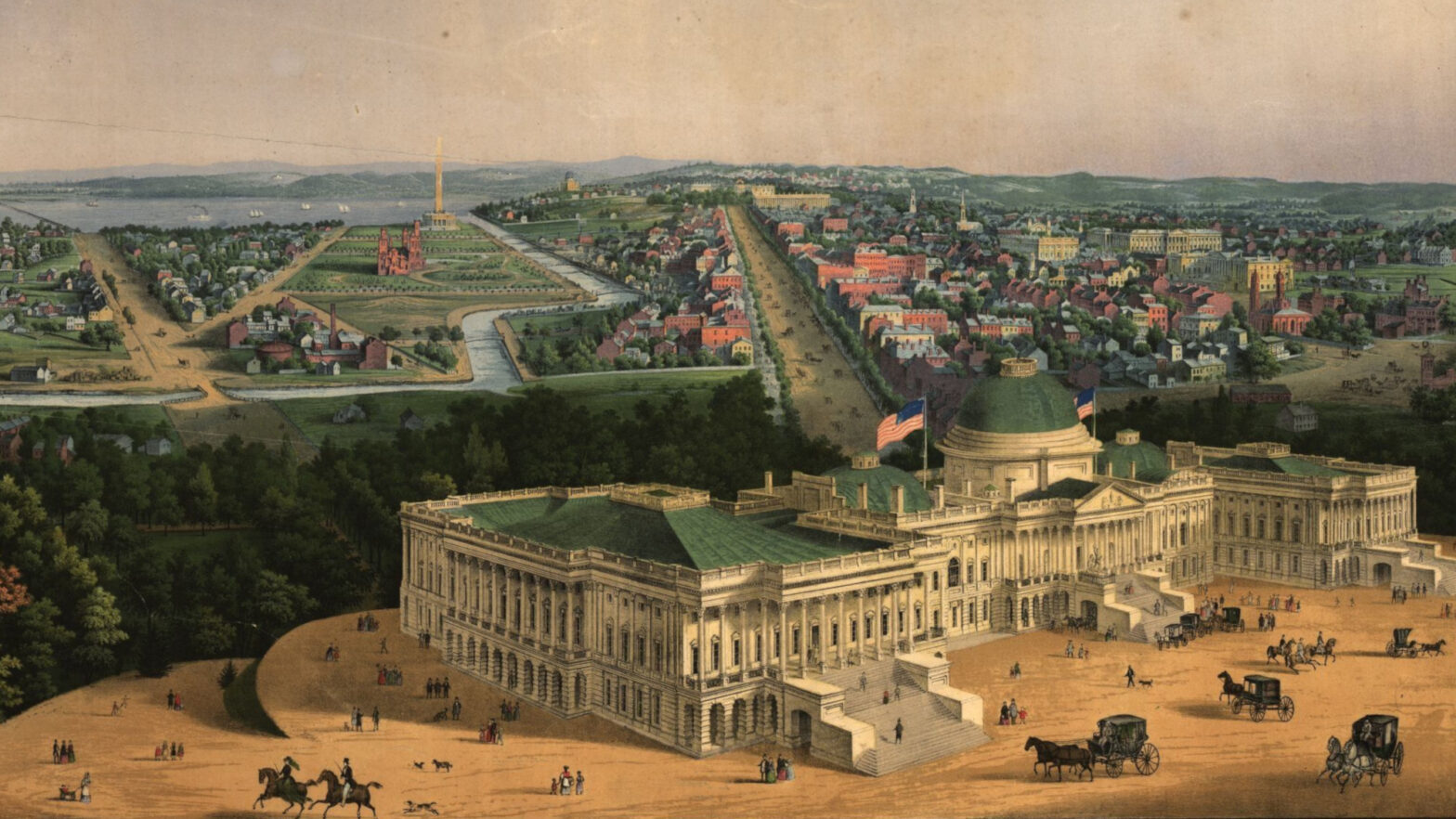While looking through the Library of Congress’ website yesterday, I found this vintage 1852 image of Washington, DC, done by the same company that did the map of Baltimore of 1868.

“Oh, wow,” I said. “This is cool. There’s the Smithsonian Castle, designed by James Renwick. There’s Trinity Episcopal, also designed by Renwick. There’s the train station a little north of the Capitol building. There’s the Old Naval Observatory near the Potomac. Oh, the Capitol building has its original dome, and there’s the Washington City Canal, and the land that the Lincoln Memorial sits on is decades away from being built out of the Potomac.”
Don’t get excited by the Washington City Canal. It was pretty much useless and, by 1850, was basically an open sewer running past Congress. It was filled back in after the Civil War. The FBI building sits atop part of what was the canal, which is why it’s sinking into the ground.
But the thing that really surprised me? The Washington Monument.

It never existed in the way that’s shown here. It’s the original design, complete. From the National Park Service website: “The present monument does not much resemble Robert Mills’ original design, which called for a huge colonnade surrounding the base of a nearly flat-topped, four-sided 600-foot obelisk. The colonnade was to house statues of Revolutionary War heroes and to be topped with a statue of Washington in a chariot.” In 1852, there would only have been a little stub of an obelisk, which is how the monument was left until well after the Civil War. (Work stopped when anti-Catholics and nativists destroyed a stone given by the Pope.) The artist couldn’t have seen the Washington Monument shown here. It didn’t exist at the time. It never existed.
In short, this 1852 painting of Washington is a version of the city that both was and would never would be.
